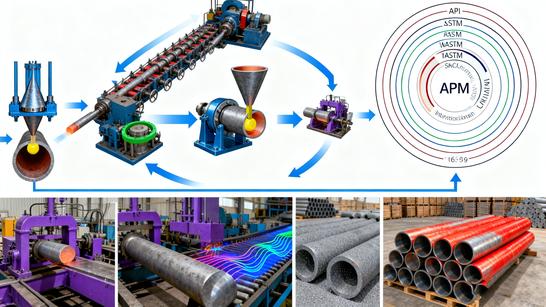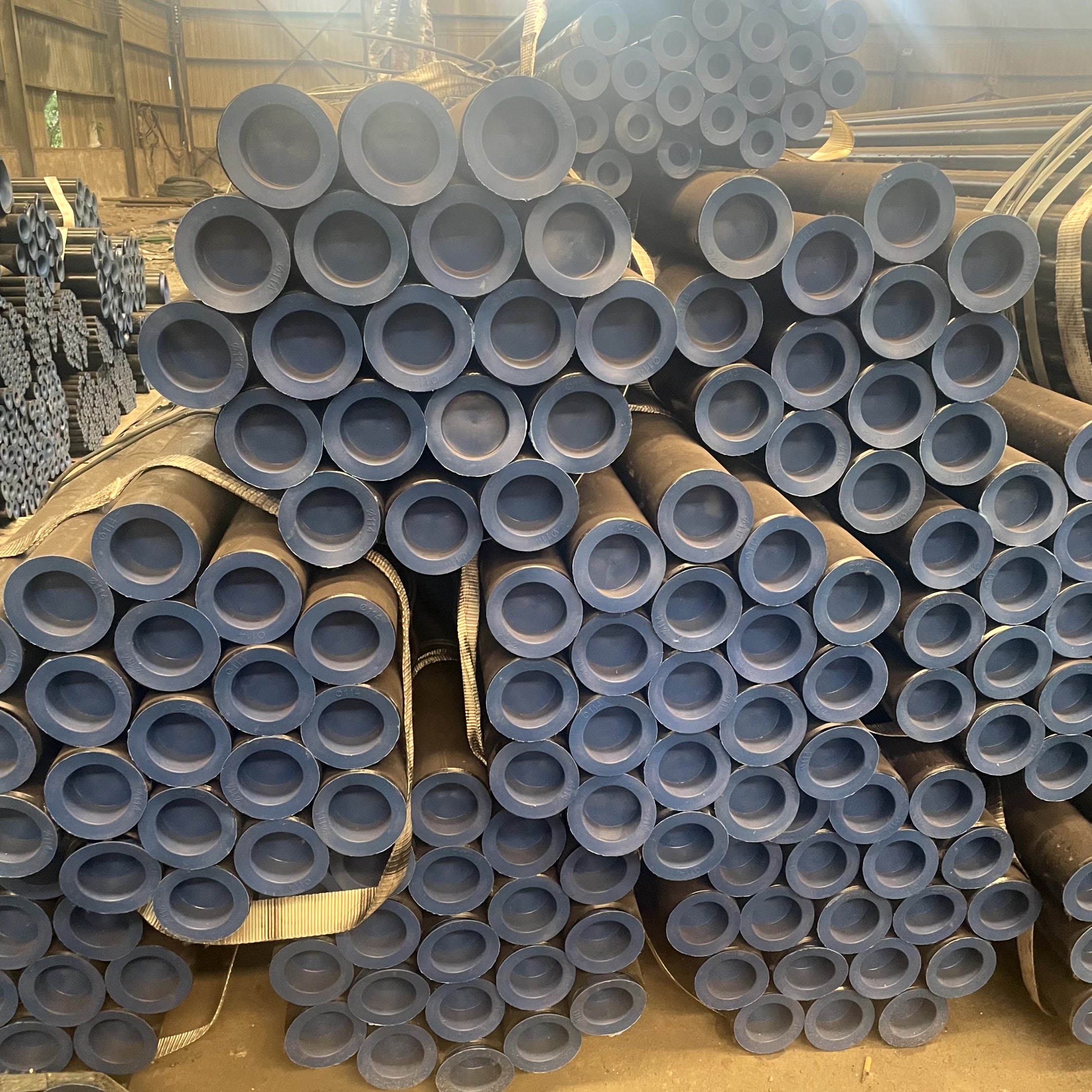I. Introduction: Forging Integrity - Beyond Raw Steel
The journey of a seamless steel pipe from a solid billet to a high-performance industrial component involves more than just shaping metal. To achieve the specific mechanical properties, desired hardness, and optimal microstructure essential for demanding applications, heat treatment plays a transformative, almost alchemical, role. Combined with stringent quality control, these processes are paramount in ensuring that every seamless pipe delivers uncompromising integrity and reliability. This guide delves into the various heat treatment methods and critical quality control measures that underpin the production of superior seamless pipes.
Understanding these foundational manufacturing processes is key to appreciating the robust performance of seamless pipes, as further detailed in our comprehensive guide: [The Definitive Guide to Seamless Pipe Selection: Matching Global Standards (ASTM, API, JIS, EN) and Alloys for Critical Industrial Applications] .
II. The Science of Heat Treatment: Shaping Microstructure and Properties
Heat treatment involves controlled heating and cooling cycles that fundamentally alter the internal structure of steel, thereby modifying its physical and mechanical properties.
-
2.1. Normalizing:
-
Process: Heating steel above its critical temperature, holding it, and then air cooling.
-
Purpose: Refines grain structure, homogenizes the material, and reduces internal stresses, improving toughness and machinability. Often applied to [Hot-Finished Seamless Pipe for High-Pressure Applications] to ensure uniform properties after rolling.
-
-
2.2. Annealing:
-
Process: Heating to a specific temperature (often higher than normalizing), holding, and then very slow cooling in the furnace.
-
Purpose: Produces a softer, more ductile material, relieves internal stresses, and improves cold workability and machinability. Essential for subsequent cold drawing processes, like in our [Cold-Drawn Precision Seamless Tube with High Dimensional Accuracy] , to prevent cracking during severe deformation.
-
-
2.3. Quenching & Tempering (Q&T):
-
Process: Quenching (rapid cooling in water, oil, or polymer) after heating to achieve a hard, brittle martensitic structure, followed by tempering (reheating to a lower temperature and then cooling) to improve toughness and ductility while reducing brittleness.
-
Purpose: Produces high strength and hardness, making it suitable for applications requiring exceptional mechanical properties, such as [High-Pressure Seamless Gas Cylinder Tube for LPG & CNG Cylinders] , where robust material is critical for safety.
-
-
2.4. Stress Relieving:
-
Process: Heating to a relatively low temperature, holding, and then slowly cooling.
-
Purpose: Primarily to reduce residual stresses induced by manufacturing processes like cold drawing or welding, without significantly altering the microstructure or mechanical properties.
-
-
Keywords: seamless pipe heat treatment, normalizing, annealing, quenching and tempering, stress relieving, pipe microstructure
III. Quality Control: Ensuring Unwavering Integrity
Robust quality control (QC) is integral throughout the seamless pipe manufacturing process, from raw material inspection to final product verification.
-
3.1. Raw Material Inspection:
-
Checks: Verifying the chemical composition and dimensions of the steel billets to ensure they meet specified standards before production begins.
-
-
3.2. In-Process Monitoring:
-
Checks: Continuous monitoring of temperature during rolling and heat treatment, dimensional checks after each step, and visual inspection for surface defects.
-
-
3.3. Mechanical Testing:
-
Tests: Tensile strength, yield strength, elongation, hardness, impact (Charpy) tests (especially for low-temperature service pipes). These tests confirm the material properties after heat treatment.
-
Our commitment to quality ensures that our [JIS G3459 SUS304 Stainless Steel Seamless Pipe for General Piping Applications] and [ASTM A312 TP304/TP316 Stainless Steel Seamless Pipe for Chemical, Food, and Pharmaceutical Applications] consistently meet their specified mechanical properties through rigorous testing.
-
-
3.4. Non-Destructive Testing (NDT):
-
Methods: Ultrasonic Testing (UT), Eddy Current Testing (ET), Radiographic Testing (RT), and Magnetic Particle Testing (MT) are used to detect internal and surface flaws without damaging the pipe. This is critical for high-integrity products like [API 5L X42/X52 Seamless Pipe for Oil & Gas Pipeline Transportation] .
-
-
3.5. Dimensional Verification:
-
Checks: Precise measurement of outer diameter, wall thickness, ovality, and straightness to ensure adherence to tight tolerances. Crucial for our [Cold-Drawn Precision Seamless Tube with High Dimensional Accuracy].
-
-
3.6. Surface Inspection:
-
Checks: Visual and sometimes automated optical inspection for surface imperfections, scales, or decarburization.
-
-
Keywords: seamless pipe quality control, pipe mechanical testing, non-destructive testing pipe, pipe dimensional accuracy, material test reports
IV. Conclusion: The Foundation of Reliable Seamless Pipe
The journey from a raw steel billet to a high-performance seamless pipe is meticulously guided by the dual pillars of advanced heat treatment and stringent quality control. These processes are not mere steps but critical interventions that engineer the desired mechanical properties and ensure the absence of detrimental flaws. By mastering the science behind these techniques, manufacturers deliver seamless pipes that offer unmatched reliability, safety, and longevity, forming the unbreakable backbone of critical industrial applications worldwide.





